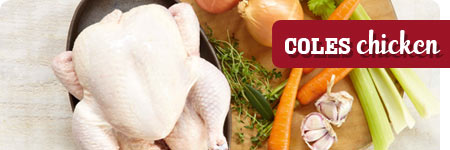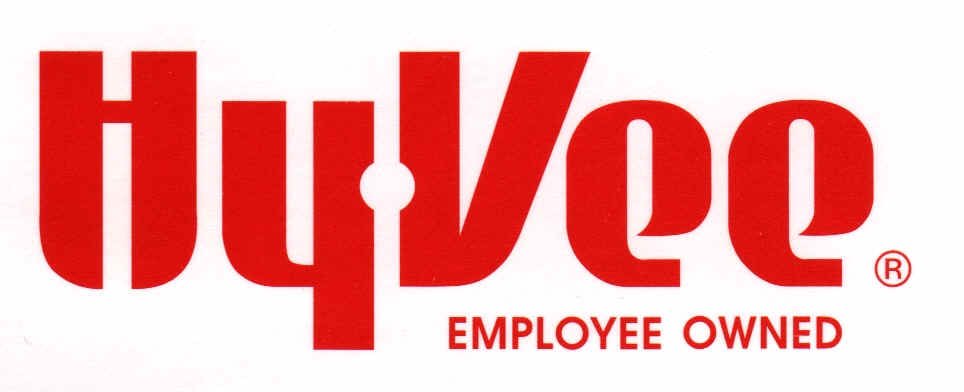Tag Archives: kansas state
Nosestretcher alert: Kansas State launches global campus
People will say anything with a straight face to keep their jobs, I guess.
Cheerleader-in-chief Kirk Shultz gushed that Kansas State now has a 4th campus! The K-State Global Campus.
 Instead of embracing massive open on-line courses (MOOCs), Kansas State rebranded distance education as the global campus.
Instead of embracing massive open on-line courses (MOOCs), Kansas State rebranded distance education as the global campus.
It’s the rise of the PR flunkies, and the addiction to distance ed fees at $2,000 a course.
Church, mob, university, everyone pays a tax, but this is ridiculous.
Hilarious, except I still pay Kansas taxes that go to support this crap.
I offered to develop MOOCs for food safety, arguing that safety was global, not isolated to some town in Kansas.
I got fired for not being on campus; for being global.
I had a graduate student develop a restaurant inspection disclosure system for New Zealand. I had another graduate student evaluate food training systems in Winnipeg, Manitoba (that’s in Canada).
For now, this is my classroom; far more rewarding (upper right).
Universities can be silly places.
WTF? Keep food safety out of AIB, Kansas State proposal
A former colleague at Kansas State University asked me yesterday if I would deliver my annual talk with summer public health students despite being unceremoniously dumped last year.
I said sure, I’ll always talk with students: they shouldn’t have to suffer from administration incompetence (I pre-record the talk, send a bunch of background material and then skype in for discussion; works for most of the world, just not Kansas administrators).
 But I also had to wonder when Kansas State announced they were proposing a $60 million partnership with AIB International (that’s the American Institute of Baking, also in Manhattan, Kansas) to create a Global Center for Grain-based Foods.
But I also had to wonder when Kansas State announced they were proposing a $60 million partnership with AIB International (that’s the American Institute of Baking, also in Manhattan, Kansas) to create a Global Center for Grain-based Foods.
What marketing geniuses come up with these names?
“We are looking at our shared expertise to help enable the grain-based food industry, both from a learning/technical application, and from a food safety perspective,” said Andre Biane, president and CEO of AIB International.
Having AIB and food safety in the same sentence should shock anyone.
AIB is the third-party auditor that approved salmonella-tainted peanut paste that killed nine and sickened 600, gave DeCoster egg operations a “superior” rating and “recognition of achievement” in June 2010, just as thousands of Americans began barfing from Salmonella in DeCoster eggs, and a big thumbs-up to Veggie Booty before Salmonella started making people sick.
As has been documented, although AIB considered the Peanut Corporation of America plant ‘Superior,” Nestlé twice inspected PCA plants and chose not to take on PCA as a supplier because it didn’t meet Nestlé’s food-safety standards, according to Nestlé’s audit reports in 2002 and 2006.
I also wonder when KState administratium goes on about its Australian ties and clearly knows nothing about the culture here, even with two former KState profs sitting here.
Keep believing your own press releases: it’s what universities are good at.
Audits and inspections are never enough: A critique to enhance food safety
30.aug.12
Food Control
D.A. Powell, S. Erdozain, C. Dodd, R. Costa, K. Morley, B.J. Chapman
http://www.sciencedirect.com/science/article/pii/S0956713512004409?v=s5
Abstract
Internal and external food safety audits are conducted to assess the safety and quality of food including on-farm production, manufacturing practices, sanitation, and hygiene. Some auditors are direct stakeholders that are employed by food establishments to conduct internal audits, while other auditors may represent the interests of a second-party purchaser or a third-party auditing agency. Some buyers conduct their own audits or additional testing, while some buyers trust the results of third-party audits or inspections. Third-party auditors, however, use various food safety audit standards and most do not have a vested interest in the products being sold. Audits are conducted under a proprietary standard, while food safety inspections are generally conducted within a legal framework. There have been many foodborne illness outbreaks linked to food processors that have passed third-party audits and inspections, raising questions about the utility of both. Supporters argue third-party audits are a way to ensure food safety in an era of dwindling economic resources. Critics contend that while external audits and inspections can be a valuable tool to help ensure safe food, such activities represent only a snapshot in time. This paper identifies limitations of food safety inspections and audits and provides recommendations for strengthening the system, based on developing a strong food safety culture, including risk-based verification steps, throughout the food safety system.
Meat safety management in complex world
I’m at the L.A. airport and can’t get to Kansas City for my interview to prove I’m worthy to be a U.S. citizen because of snow. Bloody Marys and free Internet ease the angst (I don’t really have angst).
And I won’t be at the seminar by Scott Goltry, vice president, technical services, American Meat Institute at 4 pm today at Kansas State University.  But that’s what the Internet is for.
But that’s what the Internet is for.
Scott provides oversight to AMI’s packer and processor members on current and proposed inspection related issues. He is responsible for audit harmonization, food defense and sanitary design of facility and equipment initiatives at AMI. Scott is a Kansas native and K-State alum.
The seminar takes place at the Mara Conference Center, 4th Floors, Trotter Hall – College of Veterinary Medicine.
The live stream will be available at
Evaluation of a hand hygiene campaign in outpatient health care clinics
Full kudos to my colleague Kate KuKanich, an assistant professor in the veterinary college at Kansas State, for managing clinics, a kid, bringing me duck eggs when I’m in town, and shepherding this project through to completion.
It’s the third paper we’ve published together in two years, with another  one on the way. Who says I can’t collaborate.
one on the way. Who says I can’t collaborate.
Evaluation of a hand hygiene campaign in outpatient health care clinics
Am J Nurs. 2013 Feb
Kukanich KS, Kaur R, Freeman LC, Powell, D.A.
Abstract
An intervention improved the frequency of hand hygiene attempts.
OBJECTIVE:
To improve hand hygiene in two outpatient health care clinics through the introduction of a gel sanitizer and an informational poster.
METHODS:
In this interventional study, health care workers at two outpatient clinics were observed for frequency of hand hygiene (attempts versus opportunities). Gel sanitizer and informational posters were introduced together as an intervention. Direct observation of the frequency of hand hygiene was performed during baseline, intervention, and follow-up. A post-study survey of health care workers was also distributed and collected.
RESULTS:
In both clinics, the frequency of hand hygiene was poor at baseline (11% and 21%) but improved significantly after intervention (36% and 54%) and was maintained through the follow-up period (32% and 51%). Throughout the study, post-contact hand hygiene was observed significantly more often than pre-contact hand hygiene. In both clinics, health care workers reported a preference for soap and water; yet observations showed that when the intervention made gel sanitizer available, sanitizer use predominated. Fifty percent of the surveyed health care workers considered the introduction of gel sanitizer to be an effective motivating tool for improving hand hygiene.
CONCLUSIONS:
Hand hygiene performance by health care workers in outpatient clinics may be improved through promoting the use of gel sanitizer and using informational posters. Compared with surveys, direct observation by trained observers may provide more accurate information about worker preferences for hand hygiene tools.
Teens drug parents to use Internet
Unlimited Internet. It’s what I miss most about the U.S.
But we’re good in Anna Maria Island as everyone is running their computers, iPads and cell phones while preparing for Kansas State’s  appearance in the chip bowl.
appearance in the chip bowl.
I also know better than to try and limit access. Boundaries, yes. Curfews? Not so much.
USA Today reports police say two California teenagers used prescription sleeping medication to drug the milkshakes of their parents so they could use the Internet.
The Sacramento Bee reports the girls offered to pick up milkshakes at a fast-food restaurant for the parents of one of the girls Friday.
The drug was mixed into the shakes, and the couple fell asleep. The suspicious parents picked up a drug test kit the following day.
The girls told investigators they wanted to use the Internet, which the parents shut down daily at 10 p.m.
It’s unclear what the girls did online.
Animal feces not all that’s in football mouthguards
As my Kansas State friends revel in their No. 4 national ranking after trouncing West Virginia yesterday, and as alum Josh Freeman shines for the Tampa Bay Buccaneers today (I love watching football at 4 a.m. Monday in Brisbane background), it has alarmed some players to know that mouthguards are covered in crap.
Animal crap.
Athletic mouthguards are a crucial football equipment item. But according to the USA  Today, studies have found blood, sputum, mouth discharges (tobacco products), chemicals, animal feces and other players’ DNA on players’ hands, gloves, helmets, uniforms, shoes, socks and equipment.
Today, studies have found blood, sputum, mouth discharges (tobacco products), chemicals, animal feces and other players’ DNA on players’ hands, gloves, helmets, uniforms, shoes, socks and equipment.
Richard T. Glass, professor of forensic sciences, pathology and dental medicine at Oklahoma State University, has studied mouthguards extensively. He collaborated on a study that found microbial contamination of mouthguards by bacteria, yeasts and molds associated with heart disease, pneumonia, meningitis and infections of the skin, mouth, gum, bone and urinary and gastro-intestinal tracts. The unpleasant and self-evident truth is this: if a player removes and reinserts his mouthguard, he might as well be sticking his fingers or gloves in his mouth.
Glass’ study determined that microbial load can be reduced by soaking a mouthguard in an antimicrobial solution between uses. He suggests replacing the mouthguard every two weeks. The solution is readily available if seldom accessed.
It’s like I tell 3-year-old Sorene; don’t put that finger in your ear or mouth; you don’t know where it’s been.
Be the bug; follow the bug; reduce the bug.
Kansas State researchers find cattle vaccine works to reduce E. coli O157:H7 in a large-scale feedlot setting
A commercial vaccine for cattle can effectively reduce levels of E. coli by more than 50 percent, a Kansas State University study has found. The vaccine is also effective using two doses instead of the recommended three doses, which can help cut costs for the beef industry.
David Renter, associate professor of epidemiology, is the principal investigator on a project that researched the effectiveness of products used to prevent the shedding of E. coli O157:H7 in cattle. The research appears in a recent online version of the journal Vaccine and helps improve current preventative methods for addressing food safety concerns.
While E. coli O157:H7 does not affect cattle, it causes foodborne disease in humans. Vaccines and other products may be given to cattle to help prevent the spread of the bacteria.
"We wanted to test how well these products work to control E. coli O157:H7 in a commercial feedlot with a large population of cattle that were fed in the summer and may be expected to  have a high level of E. coli O157:H7," Renter said.
have a high level of E. coli O157:H7," Renter said.
Other Kansas State University researchers involved include T.G. Nagaraja, university distinguished professor of microbiology; Nora Bello, assistant professor of statistics; Charley Cull, doctoral student in pathobiology, Oakland, Neb.; and Zachary Paddock, doctoral student in pathobiology, Manhattan. Abram Babcock, an August 2010 Kansas State University doctoral graduate, also was involved in the research.
Using a commercial feedlot setting, the researchers studied more than 17,000 cattle during an 85-day period. They studied two products: a vaccine and a low-dose direct-fed microbial.
"What’s unique about this study is the number of animals we used, the research setting and that we used commercial products in the way that any cattle producer could use them," Renter said. "We didn’t want it to be any different than the way somebody would use the products in a commercial feedlot."
The researchers found that the vaccine reduced the number of cattle that were shedding E. coli O157:H7 in feces by more than 50 percent. E. coli shedding was reduced by more than 75 percent among cattle that were high shedders of E. coli. While the vaccine label suggests that it is given in three doses, the researchers found that two doses of the vaccine significantly reduced E. coli.
"Showing that level of efficacy with two doses is really important because a shift to two doses from three could significantly cut costs for the beef industry," Renter said. "In terms of logistics, it can be difficult for commercial feedlot production systems to vaccinate animals three times. Both of these benefits help when considering how the vaccine can be adopted and implemented in the industry."
The researchers also discovered that the low-dose direct-fed microbial product did not work as well as the vaccine. Renter said while the study used a lower dose of the direct-fed microbial and could find no evidence that it reduced E. coli shredding, it is possible that the direct-fed microbial product is more effective at a higher dose.
"This vaccine is an option for reducing E. coli," Renter said. "We have shown that this vaccine works and that it is a tool that could be adopted in the industry."
The research was supported as part of a three-year $1 million grant from the U.S. Department of Agriculture. Nagaraja and Renter are involved in several other studies on E. coli O157 and other types of E. coli closely related to O157, including research associated with the $25 million coordinated agricultural program, or CAP, grant with the University of Nebraska Lincoln and several other universities. That five-year grant is supported by the USDA’s National Institute of Food and Agriculture.
Abstract below:
Efficacy of a vaccine and a direct-fed microbial against fecal shedding of Escherichia coli O157:H7 in a randomized pen-level field trial of commercial feedlot cattle.
13.jun.12
Vaccine
Cull CA, Paddock ZD, Nagaraja TG, Bello NM, Babcock AH, Renter DG
http://www.ncbi.nlm.nih.gov/pubmed/22704925
Abstract
Our primary objective was to determine the efficacy of a siderophore receptor and porin proteins-based vaccine (VAC) and a Lactobacillus acidophilus-based direct-fed microbial (DFM) against fecal shedding of Escherichia coli O157:H7 in commercial feedlot cattle fed a corn grain-based diet with 25% distiller’s grains. Cattle projected to be on a finishing diet during the summer were randomly allocated into 40 study pens within ten blocks based on allocation dates. Blocks were complete; each of the four pens within a block was randomly assigned one treatment: control, VAC, DFM, or VAC+DFM. The DFM was fed (10(6)CFU/animal/day of Lactobacillus) throughout the study periods (84-88 days) and cattle were vaccinated at enrollment and again three weeks later. Fresh fecal samples (30/pen) from pen floors were collected weekly for four consecutive weeks (study days 52-77). Two concurrent culture procedures were used to enable estimates of E. coli O157:H7 shedding prevalence and prevalence of high shedders. From 4800 total samples, 1522 (31.7%) were positive for E. coli O157:H7 and 169 (3.5%) were considered high shedders. Pen-level linear mixed models were used for data analyses. There were no significant interactions among treatments and time of sampling. However, vaccinated pens had lower (P<0.01) overall prevalence of E. coli O157:H7 (model-adjusted mean ±SEM=17.4±3.95%) and lower (P<0.01) prevalence of high shedders (0.95±0.26%) than unvaccinated pens (37.0±6.32% and 4.19±0.81%, respectively). There was no evidence of a DFM effect on either measure of E. coli O157:H7 shedding. Results indicate that a two-dose regimen of the vaccine significantly reduces fecal prevalence of E. coli O157:H7 (vaccine efficacy of 53.0%) and prevalence of E. coli O157:H7 high shedders (vaccine efficacy of 77.3%) in commercial feedlot cattle reared in the summer on a finishing diet with 25% distiller’s grains.
bites, barfblog and food safety

bites.ksu.edu and barfblog.com are complimentary and comprehensive resources for those interested in microbial food safety – the things that make people barf.
Too many people get sick each year from the food and water they consume. bites and barfblog are designed to inform and engage people in dialogue about food-related risks,  controls and benefits, from farm-to-fork.
controls and benefits, from farm-to-fork.
For rapid, relevant and reliable food safety news, subscribe to barfblog.com and follow us on twitter; for a daily, or twice-daily summary, including barfblog.com posts, subscribe to bites-l at bites.ksu.edu.
Dr. Doug Powell of Kansas State University, and associates, provide credible, current, evidence-based information on food safety and make it available through multiple media. Sources of food safety information include government regulatory agencies, international organizations such as the World Health Organization (WHO) and the Food and Agriculture Organization of the United Nations (FAO), peer-reviewed scientific publications, recognized experts in the field and other sources as appropriate.
barblog.com
barfblog.com is where Drs. Powell, Chapman, Hubbell and assorted food safety friends offer evidence-based opinions on current food safety issues. Opinions must be evidence-based — with references — reliable and relevant. The barfblog authors edit each other, often viciously.
Twitter and Facebook
Breaking food safety news items that eventually appear in bites or barfblog are often posted on Twitter and Facebook for faster public notification.
Infosheets
Food safety infosheets are designed to influence food handler practices by utilizing four attributes culled from education, behavioral science and communication literature:
• surprising and compelling messages;
• putting actions and their consequence in context;
• generating discussion within the target audiences’ environments; and
• using verbal narrative, or storytelling, as a message delivery device.
Food safety infosheets are based on stories about outbreaks of foodborne illness sourced from bites and barfblog and include the following: discussion of a foodborne  illness outbreak; discussion of background knowledge of a pathogen (including symptoms, etiology and transmission); food handler control practices; and emerging food safety issues. Food safety infosheets also contain evidence-based prescriptive information to prevent or mitigate foodborne illness related to food handling.
illness outbreak; discussion of background knowledge of a pathogen (including symptoms, etiology and transmission); food handler control practices; and emerging food safety issues. Food safety infosheets also contain evidence-based prescriptive information to prevent or mitigate foodborne illness related to food handling.
bites-l listserv
The bites.ksu.edu listserv is a web-based mailing list that provides information about current and emerging food safety issues, gathered from journalistic and scientific sources around the world and condensed into short items or stories that make up the daily postings. The listserv has been issued continuously since 1993 and is distributed daily via e-mail to thousands of individuals worldwide in academia, industry, government, the farm community, journalists and the public at large.
The listserv is designed to:
• convey timely and current information for direction of research, diagnostic or investigative activities;
• identify food risk trends and issues for risk management and communication activities; and
• promote awareness of public concerns in scientific and regulatory circles.
The bites listserv functions as a food safety news aggregator, summarizing available information that can be can be useful for risk managers in proactively anticipating trends and reactively address issues. The bites editor, Dr. Powell, does not say whether a story is right or wrong or somewhere in between, but rather that a story is available today for public discussion; barfblog is where contributors express their evidence-based opinions on food safety issues.
Research
Researchers associated with bites and barfblog conduct an array of food safety research, including:
• effectiveness of food safety messages and media in public discussions of food safety issues, such as the risks of listeria to pregnant women, legislation related to raw milk, public availability of restaurant inspection data, and the safety of fresh produce, are evaluated through qualitative and quantitative methods;
• observational research methodologies are used to quantify individual food safety behaviors from farm-to-fork, to enhance handwashing compliance, thermometer use, food packaging information and interventions that can reduce the number of people that get sick from the food and water they consume; and,
• evaluation of food safety policy and alternatives.
Teaching
• A graduate program in food safety risk analysis – including food safety, language, culture and policy — is being developed and will include distance-education.
• Courses are currently taught in food safety risk analysis, and food safety reporting.
Information
• Dr. Powell is the publisher and editor of bites and barfblog. Dr. Ben Chapman of North Carolina State University is the assistant editor.
• bites and barfblog are produced by a diverse team of secondary, undergraduate and graduate students as well as professionals who create multilingual and multicultural food safety and security information, including weekly food safety information sheets, and multimedia resources.
• Research, educational and journalistic opportunities are available for secondary, undergraduate and graduate students through bites.ksu.edu and barfblog.com.
Dr. Powell, a professor of food safety at Kansas State University, is the author of 42 peer-reviewed journal articles, 10 peer-reviewed book chapters and 1 peer-reviewed .jpg) book. His cv is available at http://bites.ksu.edu/powell_cv.
book. His cv is available at http://bites.ksu.edu/powell_cv.
Links
bites and barfblog may include links to other sites, which are provided as a convenience and as an additional access to the information contained therein. bites and barfblog are not responsible for the content of any other sites or any products or services that may be offered through other sites.
Accuracy, Completeness and Timeliness of Information on the Site
The bites and barfblog folks strive to provide accurate, complete and current information. The materials on this site are provided for general information only, and any reliance upon the material found on this site will be at your own risk. We reserve the right to modify the contents of the site at any time.
For more information, please contact us.
Safely prepared and handled food keeps students safe
Veterinary student, masters of public health student, newspuller and occasional blogger Gonzalo Erdozain writes:
As a veterinary student at Kansas State, I get a lot of free food – pizza, BBQ, even fully catered meals. This past Tuesday, at our Bovine Club meeting, we had our  food catered by Hy-Vee here in Manhattan, KS. To my surprise, and delight, I observed the delivery chef test each one of the lasagna platters with a digital thermometer, and write down each temperature on a temp. sheet. Our club’s president then signed the sheet and we went about our business. Today, I called Hy-Vee to ask a few questions. Here’s the scoop.
food catered by Hy-Vee here in Manhattan, KS. To my surprise, and delight, I observed the delivery chef test each one of the lasagna platters with a digital thermometer, and write down each temperature on a temp. sheet. Our club’s president then signed the sheet and we went about our business. Today, I called Hy-Vee to ask a few questions. Here’s the scoop.
Everything they cook is up to par with the recommendations made by the Kansas Department of Health. I specifically asked about poultry, and the manager quickly answered, “we cook all our poultry to 165 ºF.” He explained that all hot foods must be over 141 ºF at the time of delivery, while cold foods must be bellow 41 ºF. If they are out of that range, they ask the customer whether to reheat it or make a new .jpg) batch. They fill in the temp. sheet, have it signed by the customer and leave printed instructions to discard any leftover food within 4 hours due to food safety risks past that timeframe. Now that I don’t have to worry about food poisoning from these events, I can focus on not contaminating my food with formalin.
batch. They fill in the temp. sheet, have it signed by the customer and leave printed instructions to discard any leftover food within 4 hours due to food safety risks past that timeframe. Now that I don’t have to worry about food poisoning from these events, I can focus on not contaminating my food with formalin.
